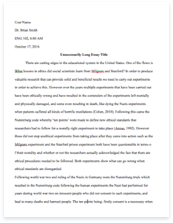Miscommunication Between Men and Women

- Pages: 3
- Word count: 612
- Category: Communication Gender Sex
A limited time offer! Get a custom sample essay written according to your requirements urgent 3h delivery guaranteed
Order NowMiscommunication between men and women during conversation is unfortunately very common, as their rules for a friendly conversation differ significantly.
From childhood, boys and girls learn to interact with one another in different ways. This learning essentially begins in the playground. Girls’ talk as a way to establish and sustain a close relationship with their peers, whereas boys’ use it to affirm a position of power. Girls’ learn to criticize each other tactfully as not to intentionally hurt the feelings of others and also to accurately interpret the speech of their peers. Boys’ use speech to attract and maintain an audience and also to confirm their status when others are speaking. These are the main ways in which girls’ and boys’ learn to use speech.
When we apply these rules as adults, male – female conversations often turn into misunderstandings.
Conversations between men and women often display a question-answer pattern with the female asking most of the questions. The woman will endeavor to maintain a conversation by encouraging others to elaborate and inviting others to contribute. Questions are seen differently by males and females. Women see questions as a way of keeping the conversation. They use them to establish and maintain a conversation, and also as a way of expressing interest and encouraging elaboration. However, a male would recognize a question as a straightforward request for information. Women also use tag endings, hedges and qualifiers frequently during conversation as a way to get a response from their fellow speakers and to keep the conversation open for others to join.
Females are much more responsive than males. For females, the occasional nod or “mm hmm” suggests that she is listening and wishes the speaker to continue. For a man, it suggests that he agrees, so far, with what the speaker is saying. These separate maintenance rules are largely contributory to miscommunication among men and women.
To a certain extent, males’ conversation lacks empathy and compassion. In the world of women, expressions of sympathy demonstrate support and the feeling of equality. Comments such as ‘I know how you feel’ show understanding and support. Contradictory to this, men find it patronizing and humiliating.
The giving of advice and problem solving are two different issues for males and females. Females perceive sharing a problem as an appeal for reassurance and the contrasting of similar experiences. On the other hand, men see problem disclosure and a request for an answer. They respond by giving direct advice and solutions. Where females prefer to talk problems through and come to a mutual agreement, men would rather ‘get over it’ quickly by offering a solution in the hope that the conversation will cease.
Another example of the differing rules between male-female communication is the different way in which utterances, made during a discussion, are viewed by each gender. Females require their audience to acknowledge what is being said and make a connection. This is seen as a sign of understanding and attention. As for men, this characteristic is rarely expressed. Males choose to ignore the comments of others when they are speaking.
In summary, since childhood, males and females have been taught to speak in a different ways. The ways they apply this learning as adults contributes to miscommunication and misunderstanding between genders. For example,
REFERENCES:
1. Julia T. Wood, 2001, ‘Gendered Interaction: Masculine and Feminine Styles of Verbal Communication’ in Gendered Lives: Communication, Gender and Culture, 4th edition, Belmont, C.A. Wordsworth Thomson Learning
2. Maltz, D. and Borker, R., 1982, ‘A Cultural Approach to male-female Communication’, in Grumperz, J. Language and Social Identity, Cambridge University Press, London










